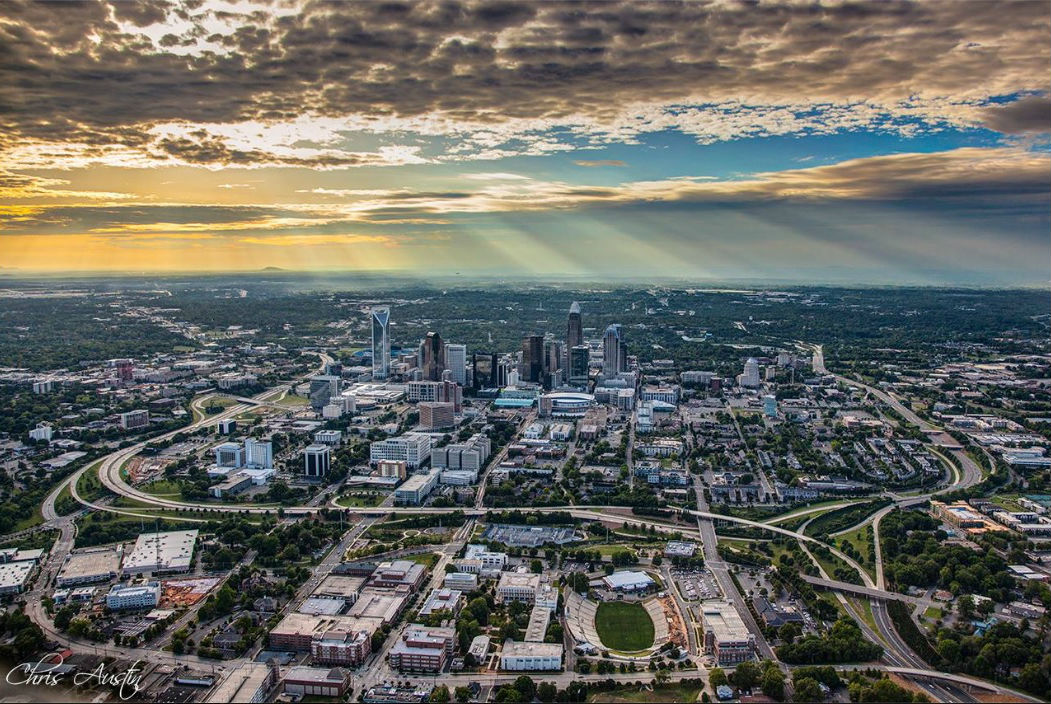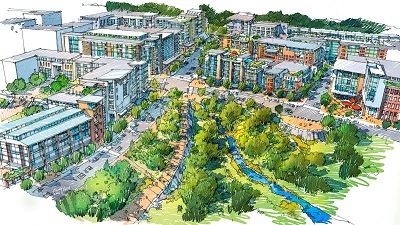Two local associations have issued safety alerts to members after reports of a man displaying odd behavior during open houses and showings.
Each Generation’s Favorite Renovation Projects
The average homeowner is spending more money on a greater number of home improvement projects. But who’s doing what?
3 Remodeling Mistakes That Hurt Resale Values
“Projects that take a home significantly beyond community norms are often not worth the cost when the owner sells the home,” says...
Fannie Loosens ARM Down Payment Rules
Borrowers may now have an easier time qualifying for an adjustable-rate mortgage.
Harvey Sparks Flood Insurance Disaster
The majority of the thousands of Texas homes submerged in floodwaters after Hurricane Harvey slammed the coastline over the weekend do not have...
You Don’t Have to Make a Down Payment on a VA Loan—Should You Anyway?
(TNS)—Many VA borrowers know that the VA home loan doesn’t require a down payment.
Indeed, the U.S. Department of Veterans Affairs, which guarantees this type of mortgage, is practically famous for its zero-down option, which opens the doors of homeownership to veterans, active duty service members, surviving spouses and other VA-eligible buyers. Many VA borrowers have little or no cash to purchase their first home.
VA loans also don’t require mortgage insurance, which is usually the case when you don’t put down 20 percent.
Though a down payment isn’t required for a VA loan, borrowers can still make one. Should they? Or is the no-money-down strategy so attractive that a down payment never makes sense?
The answer depends on the borrower’s type of military service, homeownership experience, cash position and other factors.
Down Payment Lowers Funding Fee
The main benefit of making a down payment is paying a lower funding fee.
The funding fee supports the loan guaranty, which encourages lenders to offer VA loans at lower rates and with easier qualifying guidelines.
Borrowers typically finance their funding fee as part of their loan amount, rather than pay it upfront at closing.
VA borrowers in the Reserves or National Guard pay a slightly higher funding fee with or without a down payment.
Borrowers who have a service-connected disability are generally exempt from funding fees.
First-Use Funding Fees Lower With Down Payment
The funding fee for eligible first-time homebuyers is 2.15 percent of the loan amount with no down payment.
With a 5 percent down payment, the fee is reduced to 1.5 percent. With 10 percent or more down, it drops to 1.25 percent.
Subsequent Funding Fees Higher
The funding fee is 3.3 percent for VA buyers who use the program to buy their next home if they don’t make a down payment.
With a down payment, the funding fee for subsequent-use again drops to 1.5 percent with 5 percent down, and 1.25 percent with 10 percent down.
For example, the monthly principal and interest payment for a $200,000 home loan with no down payment, a 3.5 percent interest rate and 30-year term is $898.
Financing the 3.3 percent funding fee adds $6,600 to the loan amount and raises the payment by $30 to $928.
A 5 percent down payment reduces the fee to $3,000 and the payment to $912.
That means the borrower would save about $16 each month.
Down Payment Lowers Monthly Payment
Don’t forget that a down payment also lowers the borrower’s base loan amount and monthly mortgage payment.
“The 5 percent down payment factors in (to the savings) as well because you’re financing 5 percent less,” says Mike Dill, corporate trainer at Guaranteed Rate.
For borrowers who need to “target their payment within a certain range,” to use Dill’s characterization, a down payment could mean the difference between qualifying for the loan and not qualifying.
Down Payment Finances Future Closing Costs
A down payment could make it easier to sell a home if the buyers want to move before they build equity through monthly payments or appreciation and without paying closing costs out of pocket.
Closing costs to sell can be 6 percent or more of the home’s value.
“If you didn’t have any equity, potentially you’d have to write a check for that amount,” says Michael Frueh, director of Loan Guaranty Service at the VA in Washington, D.C.
The alternative could be a default or even foreclosure.
Other Uses for Your Cash
Despite these advantages, only 22 percent of VA buyers made a down payment in 2015, according to Frueh. The other 78 percent bought with no money down. The VA doesn’t track how many subsequent-use borrowers rolled over equity from a prior home they sold toward a down payment.
Frueh says the average VA borrower has only about $10,000 at closing.
That cash might be better used for home-related purchases, repairs or other purposes. As Dill says, “The advantages of putting money down are so slim compared with keeping that money in case you have repairs or as a safety net.”
Consider Return on Investment
Borrowers could invest the money they didn’t use for a down payment in other assets or use it to pay off consumer debt, such as an auto loan, credit card or student loans.
A borrower who purchased a $200,000 home and later sold it for $300,000 could net $80,000, use $30,000 to make a 5 percent down payment for a new $600,000 home and keep $50,000 in cash, tax-free.
Visit Bankrate online at www.bankrate.com.
©2017 Bankrate.com
Distributed by Tribune Content Agency, LLC
For the latest real estate news and trends, bookmark RISMedia.com.
The post You Don’t Have to Make a Down Payment on a VA Loan—Should You Anyway? appeared first on RISMedia.
The Renter Budget: Most and Least Costly Cities
Renters’ budgets are being stretched in many cities—but some more than others, according to a new study by GOBankingRates. The most costly:
- San Francisco, Calif.
Median Rent (One-Bedroom Apartment): $3,395
- San Jose, Calif.
Median Rent (One-Bedroom Apartment): $2,505
- New York
Median Rent (One-Bedroom Apartment): $2,395
- Washington, D.C.
Median Rent (One-Bedroom Apartment): $2,271
- Jersey City, N.J.
Median Rent (One-Bedroom Apartment): $2,200
The least costly:
- El Paso, Texas
Median Rent (One-Bedroom Apartment): $555
- Detroit, Mich.
Median Rent (One-Bedroom Apartment): $600
- Wichita, Kan.
Median Rent (One-Bedroom Apartment): $625
- Tucson, Ariz.
Median Rent (One-Bedroom Apartment): $628
- Fresno, Calif.
Median Rent (One-Bedroom Apartment): $650
Source: GOBankingRates
For the latest real estate news and trends, bookmark RISMedia.com.
The post The Renter Budget: Most and Least Costly Cities appeared first on RISMedia.
5 States Where Residents Lead Richer Lives
Select states have a quality of life that surpasses others in areas such as employment, housing and safety. A recent study by GOBankingRates ranks the top five:
- New Hampshire
Median Household Income: $66,779
Median Home List Price: $278,000
Violent Crimes Per 1,000 People: 1.99
- Wyoming
Median Household Income: $58,840
Median Home List Price: $238,125
Violent Crimes Per 1,000 People: 2.22
- Virginia
Median Household Income: $65,015
Median Home List Price: $299,950
Violent Crimes Per 1,000 People: 1.96
- North Dakota
Median Household Income: $57,181
Median Home List Price: $201,500
Violent Crimes Per 1,000 People: 2.39
- Delaware
Median Household Income: $60,509
Median Home List Price: $260,000
Violent Crimes Per 1,000 People: 4.99
Source: GOBankingRates
For the latest real estate news and trends, bookmark RISMedia.com.
The post 5 States Where Residents Lead Richer Lives appeared first on RISMedia.
River District One Step Closer
 Back in November of 2016 we wrote about the River District master planned community slated for a vast undeveloped tract of land between the Catawba River and Charlotte Douglas International Airport. The plan has moved one more crucial step forward as City Council has voted unanimously to approve funding. The economic development committee has allocated public money to help fund infrastructure for the development. The improvements will be for roads, police facilities, fire fighting facilities, schools, sanitation, and transit facilities.
Back in November of 2016 we wrote about the River District master planned community slated for a vast undeveloped tract of land between the Catawba River and Charlotte Douglas International Airport. The plan has moved one more crucial step forward as City Council has voted unanimously to approve funding. The economic development committee has allocated public money to help fund infrastructure for the development. The improvements will be for roads, police facilities, fire fighting facilities, schools, sanitation, and transit facilities.
A total of $31.2 million in public money will join $30 million from developers Lincoln Harris and Crescent Communities. $16.2 million of the public money is from the city’s Community Investment Plan. The remaining $15 million of public funds will be reimbursed to the builder through a tax increment grant. The $16.2 million from the CIP was already allotted for roads in the Dixie-Berryhill area as part of a $44.7 million bond package approved last year.
Road projects will include extending West Boulevard, Garrison Road, and Dixie River Road. These projects could begin construction by 2019 once planning and design by the city are completed.
 Plans are still in the works for the site, but currently they call for 8 million square feet of office space, 500,000 square feet of retail, 1,000 hotel rooms, 2,300 single-family homes, 200 retirement units, and 2,550 multi-family units. These will be spread through the nearly 1,400 acres of River District. About 40% or 550 acres of the site is expected to be preserved as natural space for residents to enjoy.
Plans are still in the works for the site, but currently they call for 8 million square feet of office space, 500,000 square feet of retail, 1,000 hotel rooms, 2,300 single-family homes, 200 retirement units, and 2,550 multi-family units. These will be spread through the nearly 1,400 acres of River District. About 40% or 550 acres of the site is expected to be preserved as natural space for residents to enjoy.
The vote by the economic development committee means the next step is a vote by the full council. This should happen at the September 11th meeting, with a vote likely at the September 25th meeting. Development for homes in River District could begin by 2021. River District is expected to take 20-30 years to fully develop, so that would put finishing around 2041-2051.
For more information on this community, call us at (704) 525-4045, or check out current listings here.
Gated Communities Take Privacy to New Level
Developers are discovering that high-end buyers are attracted to neighborhoods with more land and fewer occupants.


